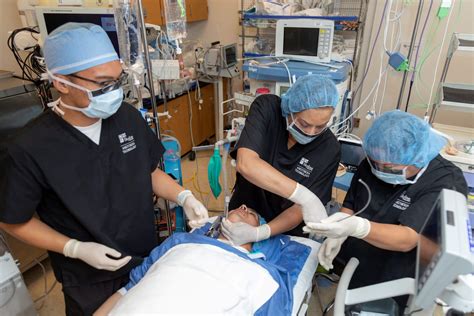As a crucial member of the surgical team, anesthesia technicians play a vital role in ensuring the success of medical procedures. Their expertise and attention to detail can make all the difference in the operating room, where precision and efficiency are paramount. In this article, we'll delve into the world of anesthesia tech pearls, exploring the essential knowledge, skills, and best practices that can help you excel in this demanding yet rewarding field.
The Importance of Anesthesia Technician Roles
Anesthesia technicians are responsible for preparing and maintaining the equipment used to administer anesthesia to patients. This includes setting up machines, testing equipment, and ensuring that all necessary supplies are available. Their role is critical in ensuring patient safety and comfort during surgical procedures. A skilled anesthesia technician can help reduce the risk of complications, promote efficient anesthesia delivery, and enhance overall patient outcomes.
Key Responsibilities of Anesthesia Technicians
To excel in this field, anesthesia technicians must possess a solid understanding of their key responsibilities, which include:
- Preparing and testing anesthesia equipment, including machines, monitors, and supplies
- Assisting anesthesia providers with patient preparation, induction, and recovery
- Maintaining accurate records of anesthesia equipment, supplies, and patient data
- Troubleshooting equipment issues and performing routine maintenance tasks
- Collaborating with other healthcare professionals to ensure seamless care coordination
Anesthesia Tech Pearls: Best Practices for Success
To achieve a smooth operation, anesthesia technicians must adhere to best practices that prioritize patient safety, efficiency, and effective communication. Here are some valuable anesthesia tech pearls to guide your practice:
- Pre-Procedure Preparation is Key
Thorough preparation is essential for a successful surgical procedure. Ensure that all necessary equipment is available, tested, and functioning properly. Verify that patient records are up-to-date and that all relevant information is communicated to the anesthesia provider.

- Effective Communication is Critical
Clear communication is vital in the operating room, where multiple healthcare professionals work together to ensure patient safety. Anesthesia technicians must effectively communicate with anesthesia providers, surgeons, and other staff members to prevent errors and promote efficient care delivery.
- Attention to Detail is Paramount
Anesthesia technicians must possess a keen eye for detail, as small mistakes can have significant consequences. Ensure that all equipment is properly set up, tested, and maintained to prevent malfunctions or errors.
- Stay Organized and Focused
Maintaining a clean and organized workspace is essential for anesthesia technicians. This helps reduce distractions, promote efficiency, and ensure that all necessary supplies are readily available.

- Continuing Education is Essential
The field of anesthesia technology is constantly evolving, with new technologies and techniques emerging regularly. Anesthesia technicians must commit to ongoing education and training to stay up-to-date with the latest developments and best practices.
Troubleshooting Common Anesthesia Equipment Issues
Anesthesia technicians must be adept at troubleshooting common equipment issues to prevent delays or complications during surgical procedures. Here are some common issues and solutions:
- Machine Malfunction: Verify that all cables are securely connected, and the machine is properly calibrated. Check the user manual or contact the manufacturer's technical support if necessary.
- Monitor Issues: Ensure that all monitor cables are securely connected, and the device is properly calibrated. Check the user manual or contact the manufacturer's technical support if necessary.

Conclusion
Anesthesia technicians play a vital role in ensuring the success of surgical procedures. By mastering the essential knowledge, skills, and best practices outlined in this article, you can excel in this demanding yet rewarding field. Remember to prioritize patient safety, efficiency, and effective communication to achieve a smooth operation. Stay organized, focused, and committed to ongoing education to stay ahead in the ever-evolving field of anesthesia technology.
Gallery of Anesthesia Technician Images






FAQ Section
What is the primary role of an anesthesia technician?
+The primary role of an anesthesia technician is to prepare and maintain the equipment used to administer anesthesia to patients.
What are some common anesthesia equipment issues that technicians may encounter?
+Anesthesia technicians may encounter issues with machine malfunctions, monitor problems, and equipment calibration.
How can anesthesia technicians stay up-to-date with the latest developments and best practices in the field?
+Anesthesia technicians can stay up-to-date by attending continuing education courses, workshops, and conferences, as well as participating in online forums and discussion groups.
